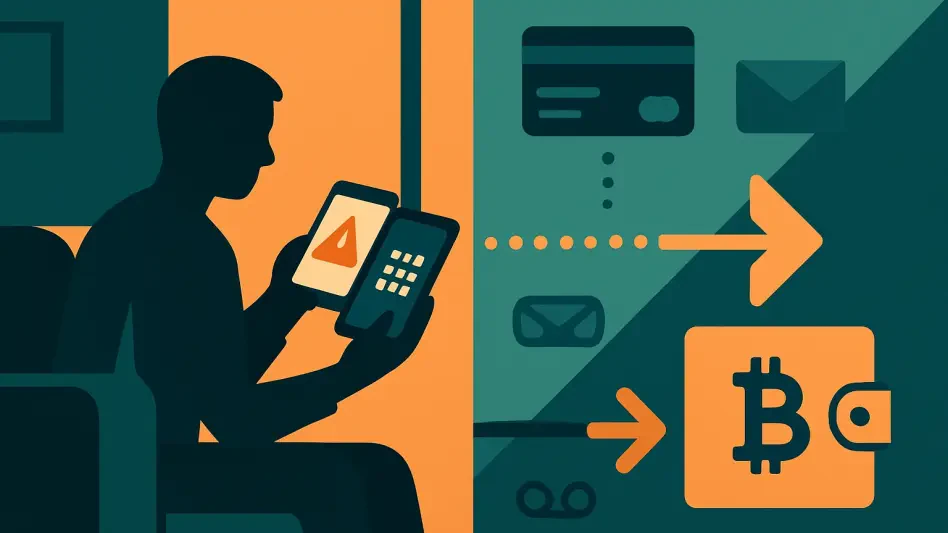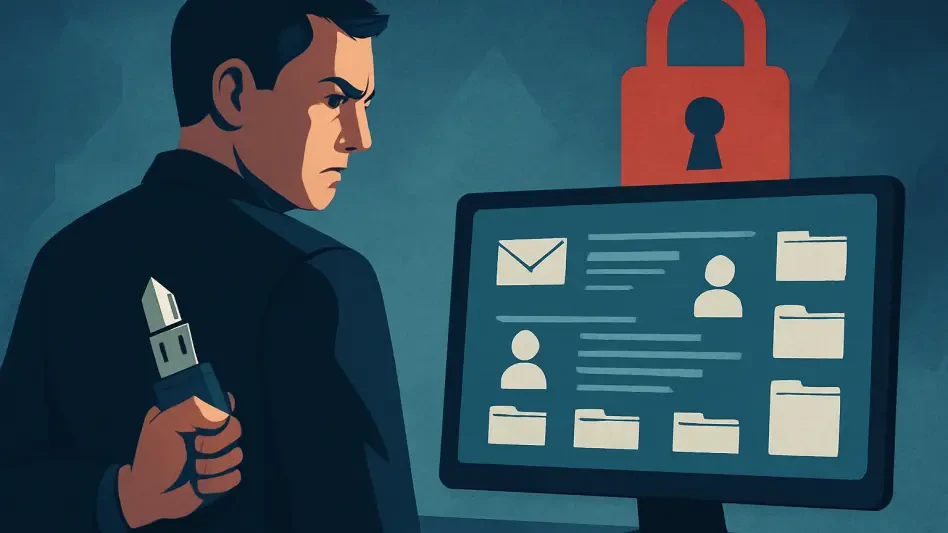The proliferation of child sexual abuse (CSA) material on the Internet poses a significant and growing challenge globally. The Internet Watch Foundation (IWF) is at the forefront of efforts to tackle this grave issue. Even though the Internet has revolutionized communication, education, and commerce, its channels also facilitate horrendous crimes, especially the dissemination of CSA content, necessitating robust countermeasures. The challenge is compounded by the constant advancement of technology and the techniques adopted by those who exploit it for illegal purposes.
The Role of the Internet in CSA Content
The Double-Edged Sword of the Internet
While the Internet has undeniably ushered in unparalleled progress and connectivity, it simultaneously harbors criminal activities, including the dissemination of child sexual abuse content. This dual nature presents a profound challenge to those working to ensure safety on digital platforms. The Internet’s vast reach and relative anonymity make it particularly susceptible to exploitation by those intent on spreading illicit materials. This creates an ongoing battle between leveraging the Internet’s advantages and mitigating its inherent risks. The battle is further complicated by the dynamic and ever-evolving nature of the Internet, which continually introduces new methods for both creating and eradicating detrimental content.
Maintaining a balance between enabling innovation and enforcing safety becomes increasingly difficult. Perpetrators often exploit these dynamics by finding new and sophisticated ways to bypass security mechanisms. Furthermore, the global nature of the Internet means that regulations can vary significantly between jurisdictions, creating loopholes that can be exploited. This highlights the need for a coordinated international strategy to combat these issues effectively. The challenge lies not only in addressing the existing threats but also in anticipating future challenges as technology continues to evolve.
Historical Context and Emergence of the Issue
The inception of the World Wide Web in the 1980s was meant to create a universally accessible system for information sharing. Initially, it was envisioned as a tool solely for academic and communication advancement. Unfortunately, its rapid expansion soon revealed darker avenues, facilitating crimes such as the creation and dissemination of CSA content. What was once an isolated and lesser-known problem has burgeoned into a pressing global issue. The Internet quickly became an environment too vast to regulate adequately, allowing harmful activities to exist in the shadows. The increasing accessibility of Internet-enabled devices worldwide contributed to the dissemination of illegal content, often without adequate parental or societal oversight.
Recognizing this, organizations and authorities have worked tirelessly to establish frameworks and mechanisms to curb these activities. The profound disparity in global regulations has made it problematic to institute uniform measures against CSA content. Additionally, the anonymity afforded online complicates identifying and prosecuting perpetrators. However, historical precedent shows that with concerted effort and international cooperation, significant strides can be made toward eradicating these crimes. The lessons learned from past efforts have informed modern strategies, urging proactive interventions and comprehensive legal and technological measures.
Internet Watch Foundation’s Mission
Evolution and Proactive Approaches
Since its establishment, the Internet Watch Foundation has significantly evolved from being a reactive CSA content reporting hotline to an organization that actively seeks out and eliminates harmful online material. This evolution marks a pivotal shift toward a more proactive approach in combating CSA content. Rather than waiting for public reports, the IWF now relies on initial intelligence to track down illegal content independently, a strategy that has proven crucial in removing offending materials swiftly and efficiently. With authorization from both the UK government and the Crown Prosecution Service, the IWF has bolstered its mission by actively participating in the search and removal of illicit material.
Such a proactive strategy not only allows for the immediate mitigation of harm but also acts as a deterrent to potential offenders. This advancement underscores the importance of staying ahead of perpetrators, who continuously devise new methods to evade detection and removal. Moreover, the IWF’s ongoing collaboration with government authorities enhances its legal standing and operational effectiveness, enabling it to navigate the complex legalities surrounding CSA investigations and removals. The shift to a proactive stance demonstrates the IWF’s commitment to adapting its strategies based on the evolving landscape of Internet threats, emphasizing continuous vigilance and adaptability.
Stakeholder Collaboration
The Internet Watch Foundation’s success hinges on its effective collaboration with various stakeholders, including technology companies, Internet Service Providers (ISPs), and other critical partners. By working closely with these entities, the IWF enhances its capacity to identify, report, and remove CSA material from the Internet efficiently. Collaborative efforts have led to the development of robust mechanisms and strategies, ensuring that the Internet becomes a safer place for all users, especially children. In this ecosystem, every stakeholder plays a crucial role; tech companies provide necessary tools and platforms for detection, while ISPs facilitate the timely removal and blocking of illegal content.
Moreover, partnerships extend beyond technological alliances to include cooperation with international law enforcement agencies and advocacy groups. This global network enhances the IWF’s ability to tackle CSA material across various jurisdictions, fostering a more unified and effective approach. These collaborations also provide a feedback loop, whereby shared knowledge and experiences lead to improved methodologies, fostering innovation in combating CSA content. The collective mission underscores the understanding that addressing such a pervasive issue requires a comprehensive, unified effort not confined to any single entity or border. Only through sustained, cooperative action can meaningful progress be achieved.
Technologies and Methodologies
Importance of Hashing Techniques
Hashing techniques have become a pivotal tool in the battle against CSA content. Once identified, CSA material is converted into a unique identifier known as a hash. This hash is then stored in an extensive database managed by the IWF, allowing for the swift identification and automatic blocking of identical content anywhere on the Internet. The precision of hash technology ensures that illegal materials are consistently identified and blocked without error, representing a significant technical advancement in combating CSA content. This approach effectively inhibits the redistribution of known illegal content, mitigating its recurrence across platforms.
Hashing technology not only speeds up the identification process but also minimizes the risk of errors, enabling hosting services to manage content dynamically and efficiently. Furthermore, by integrating these hashed identifiers into their systems, tech companies and ISPs can ensure that CSA content is swiftly identified and removed, preserving the integrity of their platforms. This technique’s adoption has significantly curtailed the reach of CSA materials, strengthening security measures and providing an invaluable tool in the continued fight against Internet-based crimes. The role of hashing exemplifies how innovative technological solutions are crucial in maintaining the safety and security of digital environments.
Storage and Security Concerns
The sensitive nature of CSA content necessitates exceptionally stringent storage and security protocols to prevent unauthorized access and ensure safe data handling. The need for robust security measures cannot be understated, as mishandling sensitive data can have severe consequences. The IWF maintains strict security protocols and separates its data handling processes from those of law enforcement to ensure the integrity and confidentiality of the information. The sensitive nature of this material demands unparalleled security to safeguard it from misuse while supporting law enforcement in investigations. The storage decision—whether to use cloud infrastructure or on-premise solutions—is a nuanced one, balancing security with operational needs.
Facing traditional concerns of on-premise data storage, many organizations are now considering secure public cloud options, driven by advancements in cloud security technologies. Shifts toward cloud solutions provide enhanced processing capabilities and streamlined cooperation, yet maintaining stringent security remains paramount, given the stakes involved. The decision to transition between storage types must be informed by rigorous risk assessments, ensuring data protection while enabling operational flexibility. The dialogue between security and technological advancement persists, underscoring the complexity of adequately addressing storage and security concerns in a landscape where both technology and threats are continually evolving.
Challenges in Tackling CSA Networks
Dark Web Anonymity
The dark web’s inherent anonymous nature presents a formidable challenge for investigators aiming to dismantle CSA networks. This part of the Internet is designed to obscure user identities, making it exceedingly difficult to trace and identify individuals involved in illegal activities. This anonymity is further complicated by the employment of bulletproof hosting services that offer defiant support to content that includes CSA materials, often ignoring legal takedown requests. These hosts capitalize on anonymization technologies to provide a protective shield, impeding law enforcement agencies’ attempts to track perpetrators and dismantle such illicit networks.
The bulletproof hosting providers’ resilience and circumvention of international regulations necessitate innovative and adaptive strategies from enforcement agencies. The ongoing battle against anonymity on the dark web requires collaborative international efforts and sophisticated technological tools to infiltrate these deeply concealed networks. Counteracting such anonymity demands not only technological intervention but also strategic legal and diplomatic measures, including international treaties and cooperation agreements. The battle is not merely technological but also legislative and diplomatic, requiring a multi-pronged approach to effectively address and dismantle these insidious online networks.
Bulletproof Hosting Obstacles
Bulletproof hosting providers epitomize a significant barrier to combating CSA content on the Internet, intentionally resisting content takedown efforts. These providers operate within regulatory gaps, exploiting jurisdictional leniencies to offer a safe harbor for illegal activities. The challenge of dealing with bulletproof hosting lies in their structured evasion tactics, designed to withstand law enforcement interventions. Bulletproof hosting companies often relocate their operations to countries with less stringent regulations, complicating international efforts to address illegal online content.
Effective measures to combat bulletproof hosting necessitate meticulous international collaboration and regulatory synchronization, bridging the diverse legal landscapes around the globe. This includes identifying and pressuring the jurisdictions that serve as havens for these providers to enforce stricter regulations and compliance with international standards. Furthermore, technological innovation in content tracing and blocking becomes essential, allowing for the early detection and neutralization of servers supporting illegal content. Despite the obstacles posed by bulletproof hosting, persistent international cooperation and technological advancements offer a path forward in attenuating the challenges they present. The resolution lies in coordinated policies, fostering a collective front that diminishes these networks’ efficacy and persistence.
Efforts and Innovations
Successes in Removing CSA Content
International operations aimed at dismantling CSA networks have yielded notable successes, demonstrating the potential for significant progress when countries collaborate. These success stories often involve multifaceted operations where multiple countries and agencies work in unison to identify, infiltrate, and shut down prolific CSA networks, leading to substantial decreases in available illegal content online. Such successes highlight the resilience of both legal frameworks and enforcement efforts in countering these crimes. However, they also reveal the enduring resilience of illicit online infrastructures that quickly adapt and re-emerge, emphasizing the need for ongoing vigilance and innovative strategies.
These collaborative operations often utilize cutting-edge technology and adopt best practices across jurisdictions, enhancing their effectiveness and reach. Demonstrable successes lend credence to the possibility of a more comprehensive approach, encouraging further investment in technology and international cooperation to preempt and neutralize these threats. While successes inspire hope and contribute to the cumulative progress against online CSA activities, they serve as powerful reminders of the need for ongoing commitment to technological and strategic advancements by all those involved, ensuring continued pressure on illicit networks and reinforcing the mechanisms needed to dismantle them persistently.
AI as a Double-Edged Sword
In recent years, artificial intelligence (AI) has emerged as both a tool and a challenge in the realm of combating CSA content. On one end, AI offers the capacity to significantly enhance the detection, monitoring, and management of such content by automating the identification processes and scanning vast amounts of data more efficiently than traditional methods. AI can help flag potential illegal content more swiftly, providing invaluable assistance to human moderators and law enforcement. On the other end, AI also presents new threats by enabling the creation of synthetic CSA imagery, generating illicit materials without real abuse victims involved.
The dual nature of AI in this context requires updated legal and technological strategies that can leverage its benefits while addressing and curtailing its potential abuses. Legal frameworks must evolve to distinguish between real and AI-generated content effectively, ensuring that advancements in AI do not inadvertently promote new methods for generating illicit material. This complex dynamic encapsulates both the transformative potential and the inherent risks posed by AI, calling for a cautious yet optimistic embrace of technology to buttress efforts in the ongoing fight against CSA content. It highlights the pressing need for ongoing research and development, informed by ethical considerations and coupled with robust regulatory oversight to ensure AI remains a beneficial tool in this crucial battle.
Continuous Battle and Collaboration
The Ongoing Struggle
The fight against CSA content is a continuous and complex endeavor, requiring concerted efforts from multiple fronts to make meaningful progress. This struggle is characterized by its dynamic nature, necessitating ongoing adaptation and perseverance in strategies employed to combat these crimes. As the Internet evolves and perpetrators employ increasingly sophisticated methods, there can be no complacency in the fight against CSA content. This continues to be a pressing issue, demanding constant vigilance and innovative approaches that can effectively counter emerging threats and resolve persistent challenges.
Importantly, this struggle underscores the significance of developing resilient technological frameworks and robust legislative policies that work together to create formidable deterrents against offenders. Moreover, law enforcement and relevant organizations must remain steadfast in their commitment, continually optimizing technological resources and reinforcing collaborative efforts that drive persistent pressure on illegal networks. As the landscape shifts, so must the approaches employed by stakeholders, ensuring they remain a step ahead of those who exploit and endanger the vulnerable.
Importance of Partnerships
The rise of child sexual abuse (CSA) material on the Internet presents a pressing and growing concern worldwide. The Internet Watch Foundation (IWF) leads the charge in combating this alarming issue. While the advent of the Internet has transformed how we communicate, learn, and do business, it also serves as a conduit for heinous crimes, notably the spread of CSA content. This dual nature of the Internet underscores the urgent need for strong and effective countermeasures. One of the significant hurdles in addressing this issue is the rapid pace of technological development, which those with malicious intent often exploit to refine and advance their methods of distributing illegal content. This constant evolution requires vigilance and adaptation from organizations like the IWF, as they strive to stay ahead of perpetrators. The global community must recognize the devastating impact of CSA material and collaborate to create an Internet environment that is safe for everyone, particularly children. The challenge is immense, but through concerted efforts, progress can be made in safeguarding the dignity and well-being of our most vulnerable members.








